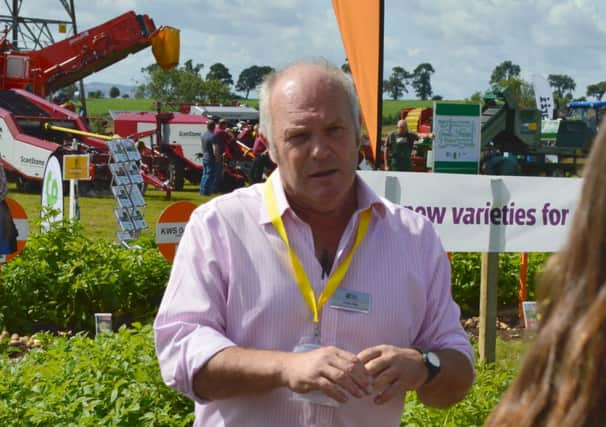Potato breeder hits at skin deep beauty


Dr Finlay Dale from the James Hutton Institute, was speaking at the Potatoes In Practice event on the outskirts of Dundee when he said that a new variety could have tremendous resistance to blight or scab but if it did not look good on the shelves of the major retailers, then it had no chance of success.
Referring to the fact that consumers then peel the unblemished skin off and dispose of it, he commented “We must have the most attractive compost heaps in Europe.”
Advertisement
Hide AdAdvertisement
Hide AdAs a potato plant breeder, he claimed to have “one hundred and one” more important targets to hit when bringing out a new variety. Many of those could deliver benefits to growers through reduced use of fertilisers or pesticides, but sometimes they had to be foregone because they did not meet the criteria for appearance.
Help for plant breeders is now increasingly coming from scientists who, having unravelled the potato’s DNA, can now pick up “marker genes” which can then be incorporated into the genetic make-up of new cultivars.
It is early days for this ground-breaking science and there could be up to 400,000 markers to be identified. So far, the researchers have been able to pin down about 10,000. One of those which the plant breeders have tracked down relates to tuber shape.
Mike Storey, head of research with the Potato Council, said there was a “real challenge to the long-term sustainability of the seed potato industry and also to the economic viability for growing ware unless new varieties came forward with inbred resistance to parasites such as eelworm.
Dale said new cultivars were in the pipeline but he also expressed his concerns that if growers did not keep changing the varieties they used, there would be a build-up of the pallida species of eelworm.
This was because there was a great variation in pallida and it tended to adapt and render resistant varieties susceptible if there was excessive continued use of one variety.
Growers should stick to a resistant variety for a maximum of two rotations, according to Dale if they wanted to avoid any build-up of infection in their fields.